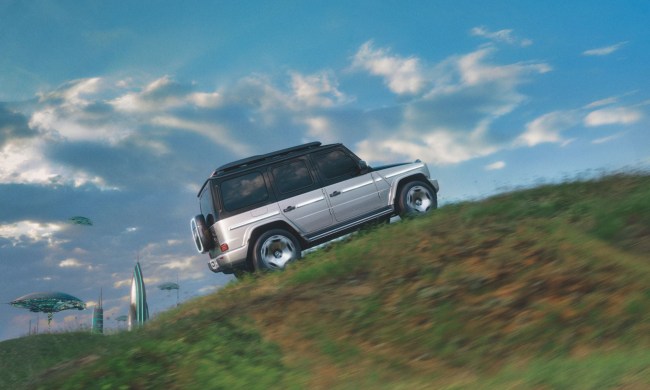
So if electric cars can get greater range by virtue of aerodynamics, style takes a back seat to driving distance as a design imperative. Most vehicles have a fixed aerodynamics drag coefficent. With “active” aerodynamics, however, the air resistance — drag — of a vehicle can change as body parts are moved.
Mercedes-Benz recently dropped hints about active aerodynamics in future electric cars, according to Electrek. Without mentioning specific future models, Anke Kleinschmit, Daimler vice president of group research and sustainability and chief environmental officer, spoke to SAE International about the importance of both weight and aerodynamic design with electric cars.
Regarding aerodynamics, Kleinschmit said, “The potential for reducing air resistance has not been exhausted, although it will slow down. As long as there are no major changes in the basic architecture of vehicles — like their length and form — there is an asymptotic limit of about 0.20 Cd with “conventional” vehicles.
“With a drag coefficient of 0.22 our CLA, which we introduced in 2013, is coming quite close to this. Finding the best solution for portability, space and our overall design philosophy can be further supported with active aerodynamic measures, like our “Transformer” Concept IAA’s features.”
The Transformer concept vehicle, which was revealed last year, has a sleek style in any case, but at speeds in excess of 50 mph it “transforms.” As described by Mercedes, “front flaps in the front bumper extend by 25 mm to the front and 20 mm to the rear, improving the air flow around the front end and the front wheel arches; the Active Rims alter their cupping from 55 mm to zero; and the louvre in the front bumper moves 60 mm to the rear, improving the underbody air flow.”
When the Transformer is at speed, its drag coefficient drops to 0.19, which minimizes wind resistance and therefore can increase vehicle range. Which specific design features will be employed with future Mercedes electric models wasn’t detailed. Clearly, however, the advantages of active aerodynamic design will play a part.
Weight reduction of course will also play a role in range extension. For the most expensive cars, carbon fiber parts and panels can cut weight. Carbon fiber’s high cost rules it out for anything but premium performance vehicles. For weight reduction with other models Mercedes focuses on hybrid steel and aluminum alloys.



